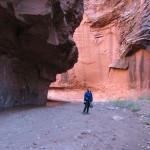As far as I can remember there has for the past 50 years or so almost always been a car trailer lurking in and around our back yard. I have always been tinkering with things mechanical like race cars, old cars, old tractors, or anything as Lucy says that makes noise. And as such a car trailer or equipment trailer has been part of the tool kit.
My 1928 Peerles road from Kittery Maine barn fresh to our home in Massachusetts on a trailer behind our then new 1973 Ford pick up as did most of my other treasures. When we moved from Massachusetts to New Hampshire there were many trips with the trailer behind our Dodge van to get all my junk moved. So trailers of the “move the mechanical stuff” genre have been a part of my life forever.
I had also owned a variety of motor homes over the years and the car trailer then was pressed into duty to transport what ever car we wanted to take along. Now that is not to say that I did not stray once in a while and tow with a tow bar or a dolly. In fact when we went to the 1985 Daytona 500 we had a then pre production Ford Taurus station wagon on a tow dolly behind our old Winnie. The car was on loan to me, I was an auto writer then road testing and writing about new cars, by Ford Motor. Only they did not know that I was towing it to Florida and that it would be seen by almost all of the motoring press in the world, but that is a story for another time.
Over the years I have gone through a number of car trailers, some good and some bad. The current trailer is a ten year old 4 wheel tandem axle rig that weighs 2,500 pounds and has a 10,000 pound GVW or translated means that it can carry 7,500 pounds of payload. It is equipped with electric brakes and all the DOT approved and required lights and reflectors. It was originally purchased to haul my antique tractors to old tractor and gas engine shows behind our 33 foot Southwind, oft time bringing home more weight in old iron than I left home with.
Now the car trailer hauls our faithful Subie the Subaru behind us as we travel all over the country. In the last three years that has been close to 50,000 miles as we chased warm weather in the winter. We are just less than 60 feet in length with the coach measuring bumper to end of trailer hitch 38 foot 7 inches and the trailer 20 foot 6 inches, near the length of a tractor trailer truck.
The added length of the trailer behind you is a factor when driving especially since the trailer is wider than a car or a conventional box trailer. It has to be in order to drive a car on to it between the wheels. If the trailer were narrower the car platform would have to be higher off the ground making loading and unloading a bit of a problem. The length and the width means that swinging turns takes room and taking up the other guys lane at times. Just as the sign on the back of a trailer truck advises “this vehicle makes wide turns”. This becomes real evident when negotiating Wally World or crowded campgrounds.
Yesterday we backed into a space in a Florida Campground that is just 62 feet long and about 16 feet wide with a big 5er on one side and two palm trees on the other side, and the utilities pedestal to boot. The road between the sites is just under 10 feet wide. But with the help of two ground spotters (people) the rig was spotted in just 5 maneuvers. We have found in our travels that more often than not we have not had to unhook the trailer or store it in a storage lot. In three years we have only had to pay at one campground to store the trailer and that has been over 300 nights of camping.
On the open road a properly set up trailer that weighs less than the tow vehicle will just track and not even be noticeable. Yes there will be a slight drag when climbing hills but there is less drag towing on a trailer than towing 4 down. The trailer has no differential or running gear to turn so the reduced drag overrides the increase weight. But that said if you are running small horsepower like we are you will not be the first to the top of the mountain, as the 500 horsepower guys will be there before you. We run a 275 horsepower Detroit but still can run 25 miles per hour up the Cascades steepest longest climb.
Oh, by the way with the old Foretravel and the small engine we get 10.5 miles per gallon unless we are in the mountains then it drops to 8 miles per gallon. To me the hardest part of the trailer experience is the loading ramps.

Brad Sears
A few years ago when we were dragging the car trailer, car trailers for toads were not seen in numbers. However in Florida this winter season w have seen more and more car trailers, both open and closed. And yes the trailer minimizes the wear and tear on the car. This summer I am going to address the ramp problem, I’ll write a blog when this happens.
Michael Butts
Good info. I don’t currently have a toad but have often wondered about trailering vs. towing or using a dolly. Seems like the reduction in wear & tear on the toad would be worth the investment.